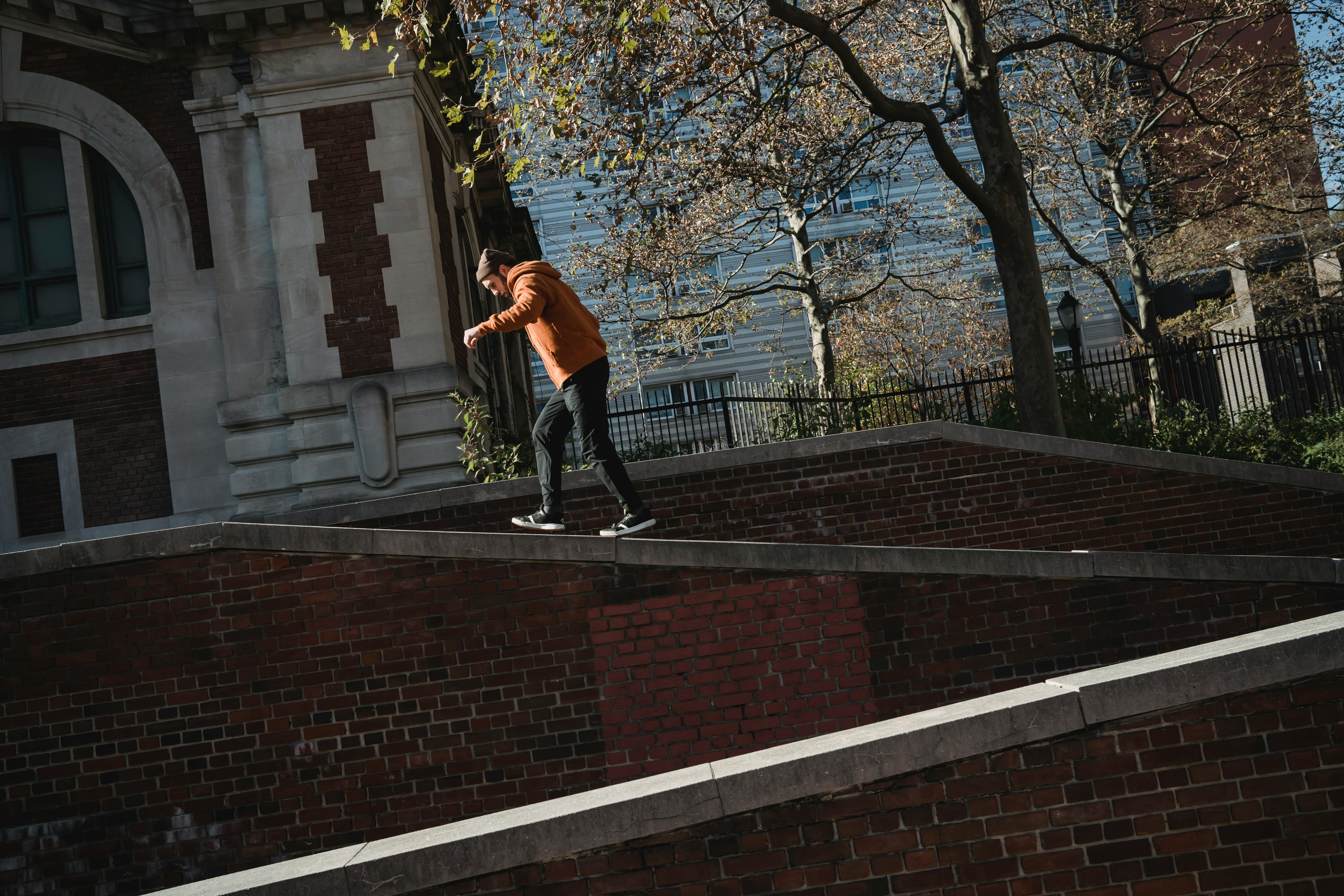Making walk up songs on your iPhone is a great way to get pumped up for a game. Whether you are a player, coach, or fan, having a personalized walk up song can help you get in the zone and be ready to play. In this guide we will show you how to make a walk up song on your iPhone. We will cover how to find the right song, how to edit it to the perfect length, and how to save it so that you can use it during your pre-game ritual. So let’s get started!Creating walk up songs on an iPhone is easy. Here are the steps to follow:
1. Open the Music app on your iPhone.
2. Select the song you’d like to use as your walk up song.
3. Tap on the three dots icon at the bottom right corner of the screen.
4. Select “Make Available Offline” from the menu that appears.
5. Tap on “Add to Playlist” when prompted and select a playlist or create a new one for your walk up song.
6. Go to Settings > Music > Playlists and tap on your newly created playlist or the one containing your walk up song.
7. Toggle on “Limit Ad Tracking” to ensure that you don’t get any ads while playing your walk up song during batting practice or warm-ups.
8. Go back to the Music app and open your playlist containing your walk up song, then tap on it to start playing it in preparation for your at-bat!
Creating your own walk-up song
Creating your own walk-up song is an exciting way to get energized before a big game or performance. With the right equipment and a little creativity, you can make a memorable entrance with your own custom walk-up song. Here’s what you’ll need to get started:
Music Production Software
The first thing you’ll need is music production software. This software lets you create and edit original music tracks, including your walk-up song. There are many different programs available, so choose the one that best fits your needs and budget.
Instrumental Tracks
In addition to creating your own original music, you’ll need some instrumental tracks to work with as well. You can find instrumental tracks online or by purchasing sample packs from music producers or sound engineers. These tracks provide the foundation for creating your own unique walk-up song.
Vocals
Your walk-up song should include vocals as well as instrumentals. You can either record your own vocals or get them from a singer or rapper that you know. If you don’t have any vocalists in mind, there are plenty of websites that offer royalty-free vocal samples that you can use in your track.
Mixing Tools
Once you’ve created all of the individual elements of your track, it’s time to mix them together into one cohesive sound. For this, you’ll need mixing tools such as EQs (equalizers), compressors and reverb processors to give the track its signature sound.
Step 1: Choose a Song
When creating your walk up song, the first step is to choose a song that best reflects your personality and style. Consider your favorite genre of music, and what kind of beat or sound you want to be associated with. Your song should also be one that you enjoy listening to and will help motivate you as you make your way to the plate. Don’t forget that this song will be playing in front of thousands of people, so make sure it’s something that won’t embarrass you!
Step 2: Get the Right Version
Once you have chosen the right song, the next step is to get the right version. Depending on where it is being played, this could either be an instrumental or vocal version. If using an instrumental version, make sure it has enough musical elements so that it stands out from the crowd. If using a vocal version, consider trimming down certain parts so that it flows better with the rest of your walk up routine.
Step 3: Practice With It
Now that you have chosen the right song and gotten the right version, it’s time to practice with it! Start by playing it through some speakers or headphones and get used to how it feels. Once comfortable with how it sounds, try walking up and down a hallway while playing the track in order to get a feel for how long each section should last. This will help ensure that you are ready when your name is called.
Step 4: Record Yourself
Finally, once everything has been perfected, record yourself walking up with your new walk up song. This will allow you to review how everything looks and sounds in real-time and give you an idea of any tweaks that may need to be made before taking center stage. Make sure to record yourself several times so that you can pick out any mistakes or areas for improvement.
Following these steps will help ensure that your walk up song reflects who you are and gets everyone excited for your next at-bat!
Downloading Music Apps and Audio Editing Software
With the rise of digital music, more and more people are looking for ways to access their favorite music without having to purchase physical copies of CDs or cassettes. One way to do so is by downloading music apps and audio editing software. These apps and software allow you to download music directly onto your device, or edit existing audio files.
Music apps are available for both Android and iOS devices, and they come in many different varieties. For instance, some apps are designed specifically for streaming music, while others are geared towards creating custom playlists or discovering new genres of music. By downloading one of these apps, you can easily access your favorite tracks or discover new ones that you may have never heard before.
Audio editing software is also becoming increasingly popular as it allows users to customize their music in a variety of ways. With this type of software, users can make adjustments to the pitch, tempo, and sound levels of their tracks. Additionally, many audio editing programs come with built-in effects that allow users to add an extra layer of creativity to their audio files.
Whether you’re looking for a way to stream your favorite tunes or customize your own music tracks, downloading the right music apps and audio editing software can help you get started on the path towards creating your own musical masterpiece. With a little bit of practice, anyone can become an expert at using these tools in no time!
Recording Your Voice
Recording your voice is a great way to create a unique and personal sound for your music. Whether you are an aspiring singer or just want to add some vocals to your song, recording your own vocals is a great way to make it stand out. There are many different ways to record your voice, from using a microphone and mixer to using digital audio software. Depending on the type of music you are creating and the equipment you have available, there are many different techniques you can use when recording your voice.
Once you have recorded the basic vocal track, it is time to add lyrics. Lyrics are the words that tell the story of the song and can help convey emotion or tell a story in a unique way. Writing lyrics can be a difficult process but with practice and dedication, you can develop strong lyrical content that fits perfectly with your music. When writing lyrics, it is important that they fit with the melody and rhythm of the track. If they do not match up properly, they will not flow as well and may even detract from the overall sound of the song.
Once you have written the lyrics for your song, you must record them with your voice. To do this effectively, practice by speaking aloud as if singing so that you become more familiar with how certain words or phrases should sound when sung. You should also focus on keeping good breath control while singing as this will help keep your vocal performance consistent throughout the song. Once all of these elements have been mastered, it is time to begin recording!
Recording vocals can be a daunting task but with patience and practice, anyone can learn how to record their own vocals in no time at all! By utilizing a few simple tips such as proper breath control and practicing speaking aloud as if singing, recording vocals for any type of music becomes much easier! With dedication and hard work, anyone can create amazing vocal recordings for their own songs!

Editing the Track
Editing a track requires careful attention to detail. A good editor will be able to identify any problems with the track and make the necessary adjustments in order to ensure a smooth, polished sound. Editing involves making sure that all of the elements of the track fit together correctly, such as making sure that all of the instruments are in time and that there are no unexpected sound artifacts. In addition to this, an editor will also be responsible for ensuring that any effects are applied correctly, such as reverb and delay, so that they enhance rather than detract from the overall sound.
Mixing Different Sounds
Mixing different sounds is an important part of creating a great track. It is important to have a good understanding of how different frequencies interact with one another when mixed together. This can help create a more balanced and professional sounding mix. It is also important to understand how different effects can be used to enhance certain elements or instruments in order to create unique sounds. Finally, it is essential to ensure that the overall mix is balanced in terms of volume levels, panning and tone so that it sounds great on any playback system.
Creating the Perfect Beat with Drum Loops
Creating the perfect beat with drum loops is a great way to add energy and excitement to a track. Whether it’s for a rap, R&B, or EDM song, drum loops are essential for creating an engaging rhythm. But how do you make sure your drum loop is just right? Here are some tips for creating the perfect beat with drum loops.
First, start by choosing the right tempo. If you’re making a hip hop track, you’ll want to pick a tempo that’s around 100-110 bpm. For EDM and other electronic genres, tempos range from 120-140 bpm. Once you’ve chosen your tempo, you can start looking for the right drum loop sample that matches your tempo and genre.
Next, consider how long your loop should be. Most drum loops are between four and eight bars long, but this varies depending on the style of music you’re creating. If you’re making a complex beat with lots of changes in rhythm and texture, then it might be best to use longer loops so that all of these elements have enough space to breathe. On the other hand, if you want to keep things simple and straightforward then shorter loops are usually better suited for that purpose.
Finally, experiment with different sounds and effects until you find just the right combination for your track. Drum samples come in many varieties – from classic acoustic drums to modern electronic sounds – so take some time to explore what’s available before settling on one particular sound or effect. You may even find yourself combining multiple samples together to create something truly unique!
Creating the perfect beat with drum loops doesn’t have to be difficult – just remember to pick the right tempo, length of loop, and sound effects in order to get just what you need! With these tips in mind, you’ll be able to craft incredible beats in no time at all!
Sequencing Your Track with MIDI Instruments
Sequencing your track with MIDI instruments is a great way to create music that is both creative and precise. MIDI stands for Musical Instrument Digital Interface, and it is a technology that allows musical instruments to communicate with computers and other devices. By leveraging the power of MIDI, musicians can create complex musical arrangements with ease. With the right software, sequencing your track with MIDI instruments can be done quickly and easily.
When sequencing your track with MIDI instruments, the first step is to choose the type of instrument you would like to use. There are many different types of MIDI instruments available, including keyboards, guitars, drums, synthesizers, and more. Once you have chosen the instrument you would like to use, the next step is to set up the software that will be used for sequencing. This can include both hardware and software-based solutions such as Ableton Live or Pro Tools.
Once you have set up your software and chosen the instrument you wish to use, it’s time to begin sequencing your track. This involves setting up virtual tracks within the sequencer in order to record each note that will make up your song. You can also assign different parts of your track (such as drums or bass) to separate tracks in order to keep things organized while recording and mixing.
Once all of your individual tracks are recorded and mixed together into a cohesive whole, it’s time to export your song into a digital audio format such as .wav or .mp3 for playback on various devices. Sequencing your track with MIDI instruments allows for precise control over every aspect of the song creation process – from arranging different parts of the song into an arrangement that works for each specific project to ensuring everything sounds just right once it has been exported for playback on various devices.
Sequencing your track with MIDI instruments allows musicians to create complex musical arrangements quickly and efficiently while maintaining accuracy throughout the entire process – from recording each note through final mixing and exporting into a digital audio format. By utilizing this powerful technology, musicians can take their music-making skills further than ever before!

Conclusion
Making a walk up song on your iPhone is an easy and fun way to show your team spirit. With a few simple steps, you can create a unique, personalized soundtrack for your team or for yourself. You can use any of the music streaming services available on iOS, such as Spotify or Apple Music, to search for songs that fit your desired theme or mood. You can also use an audio editing app like GarageBand to craft the perfect walk up song from scratch. No matter what method you choose, making walk up songs on your iPhone is a great way to get creative and give your team an extra boost of enthusiasm!
